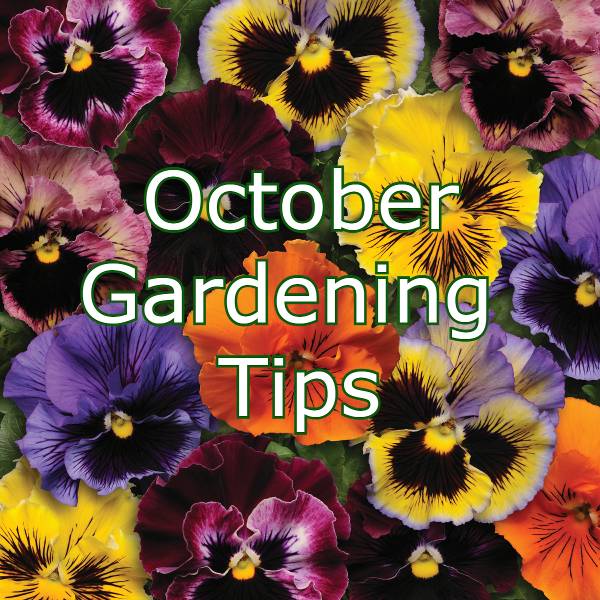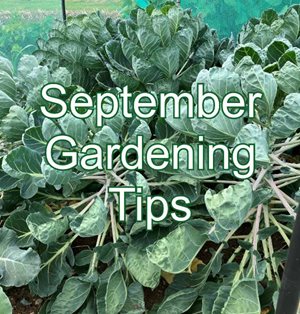Andrew Tokely's Gardening Tips for October
15 October 2024
October has arrived, so have longer evenings and cooler temperatures, but there are still plenty of jobs to do in preparation for winter and to plan for next years crops.
Read More
Andrew Tokely's Gardening Jobs for September
06 September 2024
September has arrived and the mornings are starting to feel like autumn with the daylight hours shortening. September can still be busy bringing in the rest of the harvest as well as preparing for next year's crops and display.
Read More
Andrew Tokely's Gardening Tips for August
01 August 2024
August can often be one of the busiest months, taken up by harvesting the various crops, plus preparing for future crops.
Read More
Andrew Tokely's Gardening Tips for July!
05 July 2024
July brings sunshine and many crops to harvest, as well time to hopefully enjoy the summer garden, but as always, we must also start looking ahead to next year’s display and a few autumn crops.
Read More
Heritage Seed Varieties
10 June 2024We have a range of heritage seed varieties available to buy. Some of these are old favourites listed by Vilmorin in his book ‘The Vegetable Garden’ published in 1885, others are varieties that were available in our early catalogues dating back to 1896-1898, and other heritage varieties which were in our 1928 catalogue.
Read More
Andrew Tokely's Gardening Tips for June
05 June 2024
June has arrived and hopefully warmer days will be with us soon, although it has started cool with a mixture of sunshine and showers. This is a busy month planting out for the summer ahead and the risk of frost should now be long gone.
Read More
Andrew Tokely's Gardening Tips for May
01 May 2024Seed Potato Sizing
12 April 2024Regarding the size of the seed potatoes, this is an area which is easily misunderstood. Seed potatoes are generally sized 35x60mm. This means that the smallest seed potatoes in the sample will not fall through a 35mm square. If they balance on the square (at any angle) then they comply. The same sample must all pass through a 60mm square (at any angle). We have enclosed some photos of this procedure, which hopefully illustrates the point clearly (please note this uses 35x55mm size as an example, but it’s the same principle).
We always do a thorough quality inspection before accepting seed potatoes from our growers; therefore we are confident that the seed potatoes conform to this size specification.
For the record, accurate sizing is a legal requirement of seed potato certification and the standards are very strict.
Scottish seed potatoes are often sold as size 35 x 55mm. This means the tuber must not pass through a 35 x 35mm square but be able to pass through a 55 x 55mm square.
There is a common view amongst gardeners (particularly very experienced gardeners) that seed potatoes should be “golf ball” or “hens’ egg” size. Historically, some seed potato crops would have been grown as “dual-purpose” stocks, which means that after certification, the largest potatoes in the seed crop would have been consumed and the smallest potatoes would have been used as seed potatoes. This explains where the “hen’s egg” size originated. These days, seed potato production is very specialised and dual-purpose crops are a thing of the past. As a result, when ISJ agree contracts with our suppliers, we must market all the seed potatoes produced to maximise the return to the supplier, otherwise we will not have any growers prepared to plant specialised varieties. Hence, we purchase and supply 35x60mm seed potatoes.
Large seed potatoes have more “eyes”, (and more sprouts) therefore they produce more potatoes. For a First Early variety such as Arran Pilot, or a salad-type variety such as Charlotte, this is exactly what you want– lots of tasty potatoes, straight from the garden! If gardeners would like to see this in action, they should plant their seed potatoes by size – smallest to largest (or visa versa) - and then check the number of potatoes per plant as they harvest.
Small seed potatoes weigh less, so a pack contains more seed potatoes, which means gardeners should be able to plant a larger area. In addition, small seed potatoes have fewer “eyes”, therefore they produce fewer potatoes. What’s positive about that, you might think? Well, it means the crop will produce more, large potatoes and with a modern varieties such as Cara and Maris Piper, which can produce huge yields, this is ideal – a big crop of large, tasty potatoes to store through the winter. Commercial growers pay a premium for small potatoes, especially 25x35mm (these really are small!), for these reasons.

- Example of sizing square

2. 35 x 55mm tuber will not pass through a 35mm sizing square
3. 35 x 55mm tuber will be able to pass through a 55mm square in any direction.
The principle is the same for 35x60mm seed potatoes, except the tuber must be able to pass through a 60mm x 60mm square
Summary of Legislation and Procedures Surrounding Seed Potato Production & Supply
- All seed potatoes are fully traceable back to the original pathogen-tested, disease-free micro-plants. Without getting too technical, this is vital to ensure that, should there ever be an outbreak of disease, stock movement can be traced.
- All seed potato crops from Scotland are inspected by SGRPID (Scottish Government Rural Payments and Inspections Directorate) several times during the growing period and then prior to despatch from farm.
- All seed potatoes are issued with a plant passport prior to movement from the farm of growth and provided they meet the final inspection tolerances. Movement from farm is illegal until all inspections have been completed and a valid plant passport has been issued.
- ISJ are licensed to replicate seed potato plant passports for the horticultural sector and are regularly audited by SASA inspectorate (Science & Advice for Scottish Agriculture) to ensure we comply with their conditions and meet the standards.
- ISJ replicated plant passports, which are the labels of the seed potato packs, show all the legal information required to ensure that stock is traceable. If your customer still has the labels, we can double check the details and will be able to trace the stock supplied back to the original field of growth. The Crop No. is a 6-digit number which allows us to trace the stock.
- The plant passport must also show the size of the seed potatoes. In most cases, ISJ supply size 35 x 60mm, although this can vary depending on the variety. We’ll explain this later.
- As an aside, ISJ are also ISO 9001 accredited – this is an international quality management certification, which demands we are regularly audited to ensure we comply with rigorous standards. This is not obligatory for seed potato providers, but we do it to give our customers confidence that we operate accurate and robust prepacking systems.
Read More
Andrew Tokely's Gardening Tips for April
04 April 2024The lighter evenings have finally arrived and after a wet March and wet start to April, hopefully the better weather will be with us all soon. Once the better weather arrives, the lighter evenings will give us all more time to spend in our flower and vegetable gardens. Happy Gardening!
Read More
Andrew Tokely's Gardening Tips for March
01 March 2024March has arrived, and unfortunately the soil is still very wet. Hopefully, we will get some dry weather soon to go with the longer days. There are still a few jobs to do and now is the ideal time to start planning for the crops for the rest of the year.
Read More